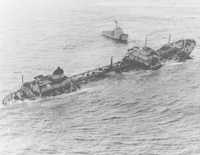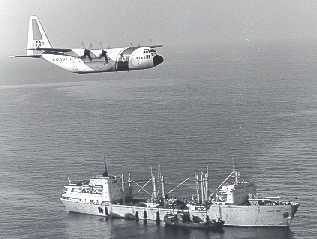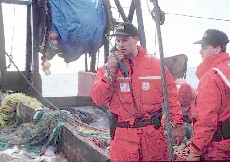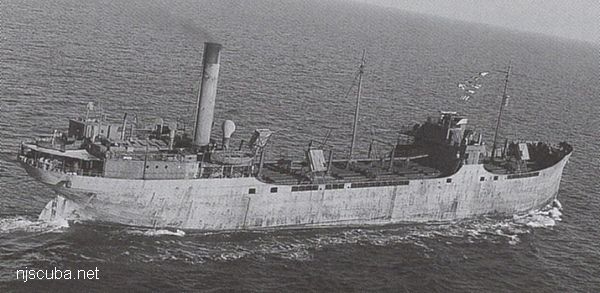United States Coast Guard 2 (5/7)
Environmental Protection
The Coast Guard has helped to protect the environment for over 180 years. In 1822 he Congress created a timber reserve for the Navy and authorized the President to use whatever forces necessary to prevent the cutting of live-oak on public lands. The shallow-draft revenue cutters were well-suited to this service and were used extensively.
The ecological responsibilities of the Service were greatly expanded by the purchase of Alaska in 1867. Fur seals were being hunted into extinction due to the value of their coats. Seal herds congregated each year to breed on the Pribilof Islands where they were ruthlessly slaughtered. A quarter million were killed during the first four years of American control of the territory. In 1870 Congress restricted the number that could be killed. Beginning in 1894, small parties of Revenue Cutter Service personnel were camped on the Pribilof Islands to prevent raids on the seal rookeries. On 11 May 1908, revenue cutters were given the authority to enforce all Alaskan game laws.

Right: The cutter Rush patrolling in the Bering Sea, circa 1895
In 1885 the Revenue Cutter Service cooperated with the Bureau of Fisheries in connection with "propagation of food fishes." Twenty years later, cutters enforced the regulations governing the landing, delivery, cure, and sale of sponges in the Gulf of Mexico.
Clean waters have been a concern for many decades. The Refuse Act of 1899 was the first attempt to address the growing problem of pollution and was jointly enforced by the Army Corps of Engineers and the Revenue Cutter Service. Today, the current framework for the Coast Guard's Marine Environmental Protection program is the Federal Water Pollution Control Act of 1972.

In 1973, the Coast Guard created a National Strike Force to combat oil spills. There are three teams, a Pacific unit based near San Francisco, a Gulf team at Mobile, Ala., and an Atlantic Strike Team stationed in Elizabeth City, N.C. Since the creation of the force, the teams have been deployed worldwide to hundreds of potential and actual spill sites, bringing with them a vast array of sophisticated equipment. Their most notable "battles" were with Metula in the Straits of Magellan during August 1974, Showa Maru in the Straits of Malacca during January 1975, Olympic Games in the Delaware River during December 1975, and Argo Merchant (above right) during December 1976.

On 24 March 1989, the supertanker Exxon Valdez ran aground on Bligh Reef in Alaska's Prince William Sound. At the height of the cleanup CGC Rush, with suitable radar, became a floating air traffic control tower, directing more than 300 aircraft daily in and around the spill site. The Exxon Valdez disaster led to the passage of the Oil Protection Act of 1990. OPA '90, as it became known, was the single largest law enforcement tasking of the US Coast Guard since the passage of Prohibition.
Even in times of war, the Coast Guard has been engaged in protecting the environment. On 13 February 1991, in response to the Iraqi firing oil wells and pumping stations, that caused oil spills in the Persian Gulf, two HU-25A Falcon jets from Air Station Cape Cod, equipped with Aireye technology [which precisely locates and records oil as it floats on water], departed for Saudi Arabia as part of the Inter-agency oil spill assessment team [USIAT]. They were accompanied by two HC-130 aircraft from Air Station Clearwater which transported spare parts and deployment packages. The Falcons mapped over 40,000 square miles in theatre and located "every drop of oil on the water...the USIAT used the mapping product to produce a daily updated surface analysis of the location, condition, and drift projections of the oil." the AVDET was deployed for 84 days, flew 427 flight hours and maintained an aircraft readiness rate of over 96 percent.

Right: the Storis tied alongside the Soviet vessel Lamut, 1972
The 200-mile zone created by the Fishery Conservation and Management Act of 1976 quadrupled the offshore fishing area controlled by the United States. The Coast Guard has the responsibility of enforcing this law. The Coast Guard also monitors a number of international agreements, treaties, and conventions, including the UN moratorium on High Seas Drift Net Fishing. This indiscriminate fishing method using large-scale drift nets, sometimes more than 25 miles in length, had been banned on the high seas since 1991. As a result of U.S-led efforts, supported by Coast Guard aircraft and cutter patrols, the nations operating these vessels have virtually abandoned this practice.

Right: an HC-130 flies over a Soviet factory vessel and fishing trawler.
A noteworthy case involving a high seas drift net vessel occurred in July 1997. A Canadian aircraft spotted the vessel Cao Yu 6025 fishing 1,100 miles northwest of Midway Island. After spotting the surveillance aircraft, the vessel's crew attempted to flee. Canadian and U.S. Coast Guard aircraft tracked it, while USCGC Basswood attempted an intercept. After a 1,700-mile chase, Basswood, along with the USCGC Chase, boarded the vessel in the East China Sea. The Cao Yu along with its catch of 120 tons of albacore, swordfish, and shark fins, was seized. In June 1998 the cutters Boutwell, Jarvis, Polar Sea, Coast Guard aircraft, along with two Russian fisheries patrol vessels seized a total of four Chinese fishing vessels suspected of high-seas driftnet fishing. This was the largest high-seas driftnet fisheries bust ever for the Coast Guard.

Right: a boarding team inspects the catch of a fishing vessel in the Atlantic

